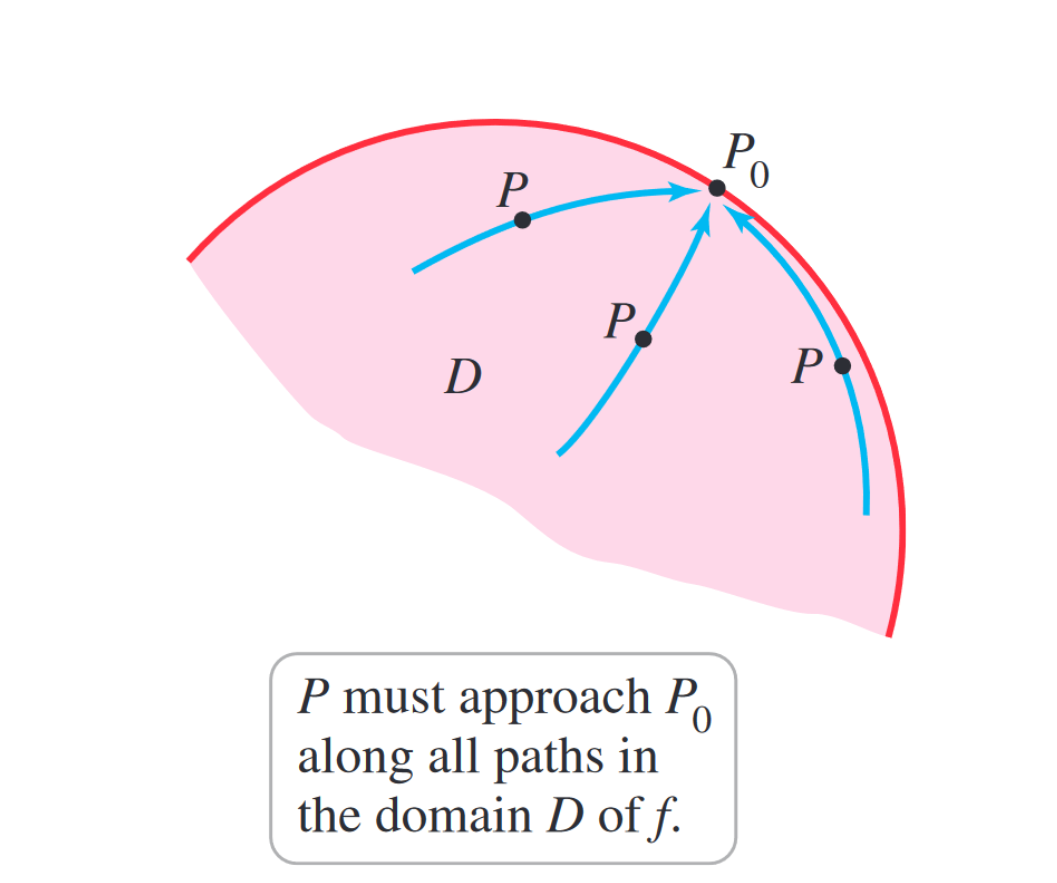A limit is some value a function may approach (but not necessarily equal). In single-variable calculus, we define the limit of a single-variable function as follows:
We suppose the function is defined for all near (but not necessarily ). If is arbitrarily close to some value for all (but not necessarily ), then:
Importantly! We can split limits up, including when we’re dealing with products and quotients.
Multivariable functions
The function will have the limit as approaches some point . We use the delta-epsilon definition to define sufficient closeness.
For the multivariable case, it must approach along all possible paths in the domain of .

Existence and non-existence
We use delta-epsilon proofs to prove the (non)existence of limits, which can be tedious. For single-variable limits, good methods include factoring the numerator, multiplying by an algebraic conjugate, or the squeeze theorem.
The two-path test can also prove non-existence. If approaches two different values as approaches , then the limit does not exist, since it must approach along all paths in the domain. See that note for more details.
Key concepts
- Squeeze theorem, a classic proof method for the existence of limits
- L’Hôpital’s rule, for indeterminate limits
- Continuity, an extension of the notion of limits